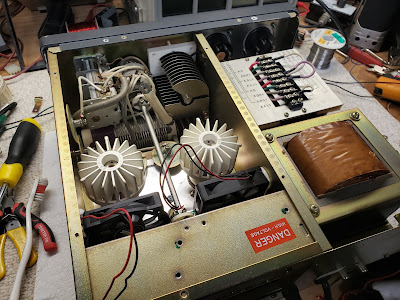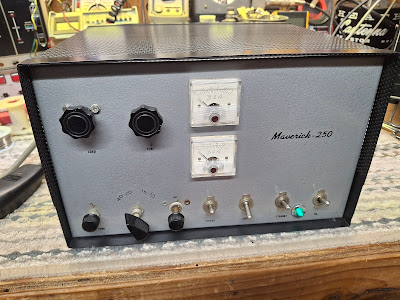This is an old Yaesu FL-2100Z that needed repairs and tubes. Considering the availability of _good_ quality 572B tubes these days, I gutted the PA and converted it to the Russian ceramic GI7B tubes.
Conversion is a bit involved, requiring new tube sockets in a different location to preserve the band-switched tuned input system, relocation of several capacitive pads gor the Load control, 4 new fans, high voltage interrupter (to allow filament warm-up without HV on the plates), new bias regulator, new cathode fusing, hv glitch protection, tank circuit re-tap, new DC supply for controls, and modification to almost all of the L and C components in the tuned input system. Here's a few pics of the process...
Finished unit, about 800w out with 65w drive.A little rig I built to work the C values out for the tuned input. The tuned input is basically a bunch of Pi networks, one for each band. I adjust the 2 air variables to find best match, measure the results with a C meter, and install fixed values on the board. Works great!
Voltage doubler on the 6vac winding for the 12v fans and controls. The 12vac winding can't be used, as it is directly coupled to the GI7B filaments and has bias dc floating on it.
HV interrupter and HV glitch resistors. The interrupter opens the lower bridge connection in the HV supply. Glitch resistance is 10ohms @ 50w.






















































